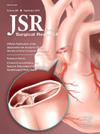美国综合整形外科住院医师的综合轮换分析:轮换指标的澄清
IF 1.7
3区 医学
Q2 SURGERY
引用次数: 0
摘要
导读:整形外科培训倾向于综合模式,需要对所有轮转进行评估,以确保培训的全面性。美国整形外科委员会和美国研究生医学教育委员会制定了轮岗指导方针,但项目采用不同的课程。本研究考察了在不断上升的综合方案中轮换块的趋势。方法2012 - 2023年全国住院医师配对计划和美国整形外科教育者委员会提供配对统计数据和当前项目列表。该研究确定了89个经过认证的综合整形手术项目,通过官方网站或直接联系收集了2024年1月至3月期间的轮换时间表。对轮换进行了分析,将其分为整形手术和非整形手术,后者又分为18个具体类别。结果十年来,综合项目增加了68%,而独立项目减少了33%,普通手术月减少了20%。对89个项目中的73个项目的分析显示,普通外科轮转的平均时间为10.3个月。虽然没有显著性差异,但院系项目的普通外科手术月数比科室项目少。当根据独立住院医师或新住院医师队列大小进行分层时,也没有显着差异。注意到亚专科旋转的相当大的变异性。理想的轮换组合仍在定义中,以反映每个方案的独特优先级。这种可变性表明,为了找到最有效的教育方法,轮转的结构和重点正在进行试验,普遍倾向于增加早期整形手术的接触,减少最初几年的非整形手术轮转。本文章由计算机程序翻译,如有差异,请以英文原文为准。
Comprehensive Rotation Analysis of Integrated Plastic Surgery Residency in the United States: Clarification of Rotation Metrics
Introduction
Plastic surgery training favors the integrated model, necessitating evaluation of all rotations to ensure comprehensive training. The American Board of Plastic Surgery and the American Council of Graduate Medical Education set rotation guidelines, yet programs adopt diverse curricula. This study examines trends in rotation blocks amid rising integrated programs.
Methods
Data from 2012 to 2023 from the National Resident Matching Program and the American Council of Educators in Plastic Surgery provided match statistics and the current program list. The study identified 89 accredited integrated plastic surgery programs, collecting rotation schedules via official websites or direct contact between January and March 2024. It analyzed rotations, categorizing them into plastic surgery or nonplastic surgery, with the latter divided into 18 specific categories.
Results
Over the decade, integrated programs increased by 68%, whereas independent programs decreased by 33%, with a 20% reduction in general surgery months. Analysis of 73 of 89 programs showed an average of 10.3 mo in general surgery rotations. Although not significant, departmental programs had fewer general surgery months than divisional programs. There were also no significant differences when stratified by association with an independent residency or incoming resident cohort sizes. Considerable variability in subspeciality rotations is noted.
Conclusions
The ideal combination of rotations is still being defined, reflecting the unique priorities of each program. This variability suggests ongoing experimentation with the structure and emphasis of rotations to find the most effective educational approach, with a general movement toward increasing early plastic surgery exposure and reducing nonplastic surgery rotations in the initial years.
求助全文
通过发布文献求助,成功后即可免费获取论文全文。
去求助
来源期刊
CiteScore
3.90
自引率
4.50%
发文量
627
审稿时长
138 days
期刊介绍:
The Journal of Surgical Research: Clinical and Laboratory Investigation publishes original articles concerned with clinical and laboratory investigations relevant to surgical practice and teaching. The journal emphasizes reports of clinical investigations or fundamental research bearing directly on surgical management that will be of general interest to a broad range of surgeons and surgical researchers. The articles presented need not have been the products of surgeons or of surgical laboratories.
The Journal of Surgical Research also features review articles and special articles relating to educational, research, or social issues of interest to the academic surgical community.

 求助内容:
求助内容: 应助结果提醒方式:
应助结果提醒方式:


